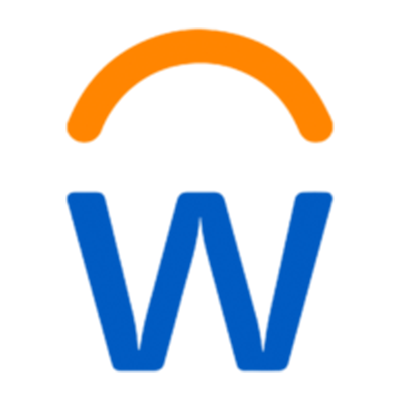Partnership, personalization, progress: AWS’s Kevin Bell on how technology is shaping the future of learning
Kevin Bell, Head of Higher Education & Research at AWS shares his thoughts on technology, disruptive partnering, and the future of learner measurement.
Let’s start with a little context-setting. You’ve worked in higher education for a large portion of your career, but technology has long been core to your work. Can you tell us a little about what initially attracted you to educational technologies—and to technology more generally?
I come from a line of educators—my dad and brother both taught, and my mum gave up a career as one of the first female programmers in the UK so that she could lecture. Fast forward to the late ’90s—I taught English in Japan to culturally reticent students who were very skittish about their language skills.
After this I enrolled in one of the earliest ‘hybrid’ programs in the US where we’d settled, using tech on dial-up to collaborate between class sessions. The tech was basic but the collaboration and opportunity was inspiring to me. I saw the potential and lucked out meeting and working with some early leaders in distant and tech-enabled learning.
What does your current role as Head of Higher Education and Research at AWS (ANZ) involve? And what, in your view, is AWS’s future vision for edtech?
In my current role, I work with Universities and Institutions of Higher Education. across the region, capturing and analyzing their challenges and opportunities. I then collaborate with AWS teams to provision solutions that meet those customer needs.
In my experience, we are at a time with the opportunity to assess the leaps we made during the pandemic, to restructure what we have learnt, and to decide what we do to finally deliver true student-centric teaching and learning. The technological capacity and capability that we now have at our fingertips can potentially align to the pedagogic ideation we have had for the last 10-20 years—and that is super exciting.
When you were Pro-Vice-Chancellor of digital futures at Western Sydney University, you published Game On! —a book about “Gamification, Gameful Design, and the Rise of the Gamer Educator”. Why was it important to you to write a book on the topic? Can you elaborate some of its key concepts?
In my early work in online and tech-enabled learning I was concerned that emergent delivery modalities would be even more difficult than traditional education for students, particularly students coming from disadvantaged backgrounds (sometimes referred to as Under Represented Minorities in the US) to complete. I studied practitioners who were getting great (student) engagement, and in studying theories around concepts like Flow and Intrinsic Motivation, I saw a set of elements that, in combination, could provoke extreme interest and great learning—such as appropriate level of challenge, opportunities to collaborate with peers, and a sense of progress.
I made the case in my doctoral thesis that technologies could be used to accentuate these good practices, sometimes in a gameful or gamified manner (the primary difference is adding—created—usually fictional narrative). My thesis generated quite a lot of interest and was published as the book by Johns Hopkins University Press. I’m quite comfortable in stating that, as I made it somewhat technology agnostic, the principles are still relevant and currently applicable to my work.
In the book you speak about “hyperpersonalized learning environments”. In what ways can personalization help activate a learner’s “intrinsic motivators”?
A large part of that comes down to some of those elements including appropriate level of challenge and sense of progress. I’m not a neuroscientist by any stretch but I did learn that he maximum amount of the chemical messenger dopamine (involved in the ‘stamping-in’ of stimulus–reward and response–reward associations) released in a human brain occurs when one is confronted by a challenge with a perceived 50% chance of completion. Much easier or more difficult than that and the (inspirational) sense of challenge with a task is lost.
“We are seeing tools, partners and systems that can help institutions incorporate the kind of personalization that can keep students engaged and succeed in ways that might otherwise have been beyond them.” Share on XDifferent people bring very different experiences to a learning experience based on their prior knowledge, interests, and related recent study. If we can allow people to speed up or take the time they need or in a collaborative scenario, take differing roles to play to strengths or provide practice in areas of weakness, their motivation will remain higher than would otherwise be the case.
Progress also can be tailored to provide smaller steps for those needing practice with less perceived ‘busy work’ for those bringing prior competence to the table. We are seeing tools, partners and systems that can help institutions incorporate the kind of personalization that can keep students engaged and, as illustrated by the practitioners I studied, retain and succeed in education in ways that might otherwise have been beyond them.
Can you give some examples of innovations you’ve seen in higher education that support different types of learner engagement?
We have many AWS partners, including Learnosity, doing great work in this space. In the assessment space, Learnosity provides adaptive testing and branching that automatically adjust question difficulty to amend level of challenge and sense of progression, along with the capacity to add Immediate Corrective Feedback (another key motivator) to compel learners to persevere, developing comprehension and ultimate mastery.
A couple of others that I know well are Cogniss – a no-code app developer whose learning activities use techniques including spaced repetition and group learning in a social constructivist model to help learners understand and retain concepts. Their apps are aimed at what was called (Vygotsky in the 1930s) the Zone of Proximal Development, where modelling, feedback, questioning, instructing, and cognitive structuring are used to “scaffold” student learning as learners move from assistance by others to self-learning toward the goal of internalization.
Cenote, recently called out as one of the Top Ed Tech Solutions Providers in Australia (2022), work in student enrolment and support spaces, delivering applications and services optimising the use of institutional data to improve recruitment, retention, successful outcomes and operational delivery models. As one of my former colleagues at Western Sydney University put it, “Student Pulse (Cenote’s platform) is the way of the future, (providing) bespoke, personalised messaging that shows students that we understand them and their needs as opposed to the ‘en masse’ broadcast communications of the past that have become so ineffective.”
How important is co-development to creating a space for innovation in learning technology?
I think that the importance of comprehensive experience cannot be overstated in this space. After 20+ years in Higher Education roles and now working at AWS, I can access such broad and specific expertise—particularly across complex technical domains—that the Amazonian tenet of teams working across what could have been silo-ed areas makes so much sense.
The AWS synergy with partners who have the drive and organization to try niche solutions, supported with our infrastructure and delivery, critiqued and honed through exposure to forward thinking ‘customers’ is providing an extremely dynamic and valuable set of offerings. I am genuinely thrilled by the potential I see at this interface between academia and technology, with participants able to work with a common language.
In your view, what are the key ingredients of effective collaboration between partners? What role does partnership/ecosystem play in affecting transformation at scale?
I facilitated a session on this at our AWS Summit in Canberra last year, appearing with AWS partners Andrew Trnacek of HES and Amarish Thakur of Optima. They described the success they had had in thinking of the collaboration not as a master-servant or a customer-client relationship. The metaphor suggested was that of an umbrella or collaborative tent within which great conversations, ideas, and brainstorming happened.
“…disruptive, impactful partnering requires a real challenge of each other to ask probing, candid questions—the Hows, the Whats and perhaps most importantly, the Whys.” Share on XPassive partnership can have basic benefits but disruptive, impactful partnering requires real challenge of each other to ask probing, candid questions—the Hows, the Whats and perhaps most importantly, the Whys—to a variety of opportunities and obvious challenges; even to seemingly sacred, unchangeable practices and processes. The opportunity—in the tent—to find each other and have partners play to clear strengths, rather than trying to re-invent wheels, I think, opens a lot more doors.
If we are discussing scale, then cloud and the myriad of advantages that opens up in the shift to cloud is close to impossible to argue against whether it be on a cost, capacity, carbon or sustainability basis.
It’s time to gaze into your crystal ball. What do you think learner measurement might look like in the future?
Wow. Big question to ask last!
We will continue to see the transition from monolithic, traditional, high-stakes testing to embedded, ongoing, low stakes, formative, experiential assessment. The thought that classes might run for weeks or even months without clear analysis of how learners are managing prior to a stressful midterm or final is antithetical to the capacities we now have to hand and the support we can offer, early, to learners who need it.
I believe we’ll see more embedded, motivating, frequent ‘comprehension’ or ‘knowledge’ checks providing guidance to instructors and students as to how they are performing as well as the efficacy of the materials they are presenting. Also, summative activities supporting gameful engagement and motivating authenticity are feasible with emergent tech like Digital Twins—simulations that can be stress tested against real world Internet of Things (IoT) data.
Imagine engineers, having learned and practised fundamentals and principles of their discipline through formative, gameful activities, really road-testing their APPLICATION of that knowledge by redesigning the Sydney Harbour bridge and having their model tested with live traffic data pulling from sensors on the actual bridge.
-What if Traffic doubled?
-What if cars simply got heavier?
-Whose bridge design could take the most stress?
-Whose would fall down?
-Whose would last 100 years?
Foundational or fundamental principles practised and revised then applied to Real World (or very close to it), with elements of cooperation, collaboration, or even competition. Motivating, clearly demonstrating competence, (practically) via hyper-personalization—plagiarism-proof.
Compare and contrast with: ‘Who is good at handling high-stakes stress, wants to sit in a school gym and/or is good at cramming for tests with theoretical knowledge that is then immediately forgotten?’
Many of our partners and the institutions I am working with are clearly on this path to authenticity and engagement. I’m extremely hopeful and positive about the future!












